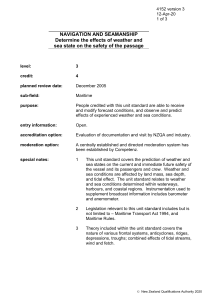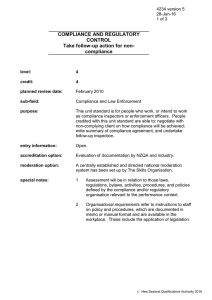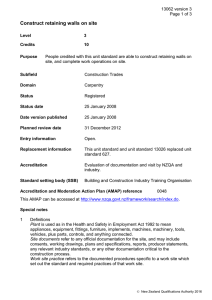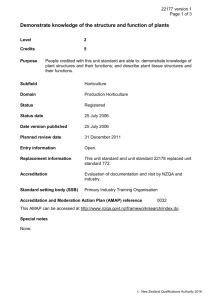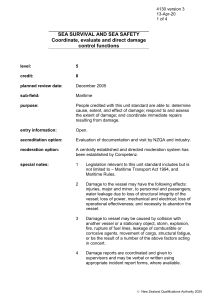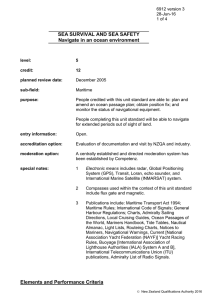NAVIGATION AND SEAMANSHIP Navigate vessel on an open coastal passage
advertisement
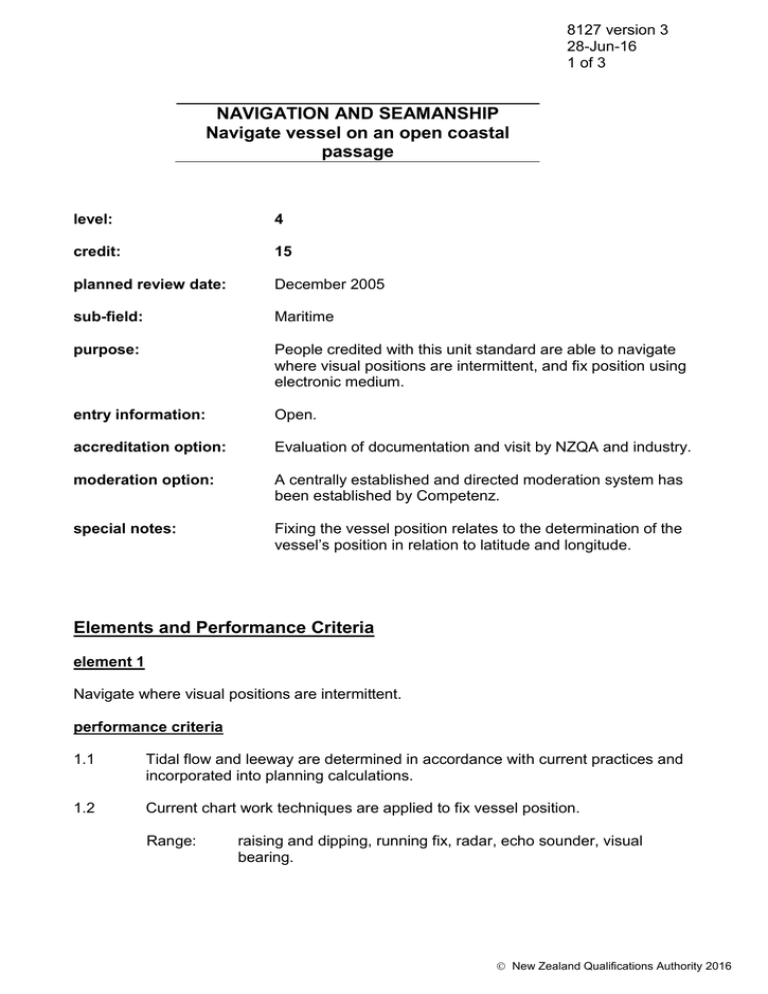
8127 version 3 28-Jun-16 1 of 3 NAVIGATION AND SEAMANSHIP Navigate vessel on an open coastal passage level: 4 credit: 15 planned review date: December 2005 sub-field: Maritime purpose: People credited with this unit standard are able to navigate where visual positions are intermittent, and fix position using electronic medium. entry information: Open. accreditation option: Evaluation of documentation and visit by NZQA and industry. moderation option: A centrally established and directed moderation system has been established by Competenz. special notes: Fixing the vessel position relates to the determination of the vessel’s position in relation to latitude and longitude. Elements and Performance Criteria element 1 Navigate where visual positions are intermittent. performance criteria 1.1 Tidal flow and leeway are determined in accordance with current practices and incorporated into planning calculations. 1.2 Current chart work techniques are applied to fix vessel position. Range: raising and dipping, running fix, radar, echo sounder, visual bearing. New Zealand Qualifications Authority 2016 8127 version 3 28-Jun-16 2 of 3 NAVIGATION AND SEAMANSHIP Navigate vessel on an open coastal passage 1.3 Equipment is operated in accordance with manufacturer’s designed function and operating instructions. Range: compass, radar, echo sounder. 1.4 Compass observations are compensated to allow for compass error figures. 1.5 Tide tabling secondary port calculations are applied to tabulated information in accordance with current industry practice. 1.6 Industry practice procedures are selected and used for the calculation of weight or time. element 2 Fix position using electronic medium. Range: radar, Global Positioning System, Transit Satellite Navigation. performance criteria 2.1 Equipment operation is conducted in accordance with manufacturer’s instructions. Range: 2.2 Corrections to the operating accuracy of position fixing equipment are applied to calculations in accordance with manufacturer’s instructions. Range: 2.3 operation includes the identification and cognisance of system limitations. system data information, manufacturer’s instructional updates. Plotted positions are confirmed through a secondary position fixing mechanism. Range: secondary mechanism – manual or electronic; plotted positions – map, plotter. New Zealand Qualifications Authority 2016 8127 version 3 28-Jun-16 3 of 3 NAVIGATION AND SEAMANSHIP Navigate vessel on an open coastal passage Comments on this unit standard Please contact Competenz qualifications@competenz.org.nz if you wish to suggest changes to the content of this unit standard. Please Note Providers must be accredited by the Qualifications Authority or a delegated interinstitutional body before they can register credits from assessment against unit standards or deliver courses of study leading to that assessment. Industry Training Organisations must be accredited by the Qualifications Authority before they can register credits from assessment against unit standards. Accredited providers and Industry Training Organisations assessing against unit standards must engage with the moderation system that applies to those standards. Accreditation requirements and an outline of the moderation system that applies to this standard are outlined in the Accreditation and Moderation Action Plan (AMAP). The AMAP also includes useful information about special requirements for providers wishing to develop education and training programmes, such as minimum qualifications for tutors and assessors, and special resource requirements. This unit standard is covered by AMAP 0054 which can be accessed at http://www.nzqa.govt.nz/framework/search/index.do. New Zealand Qualifications Authority 2016



